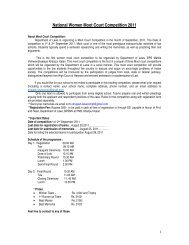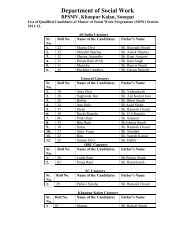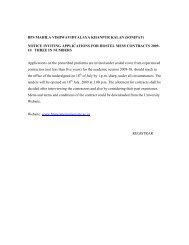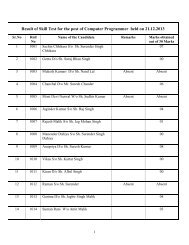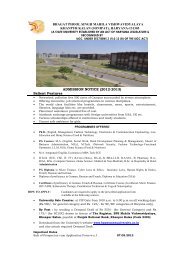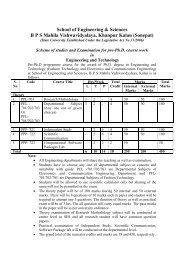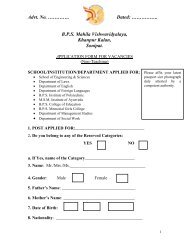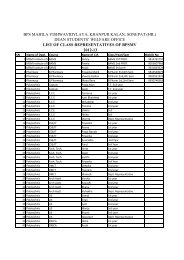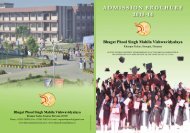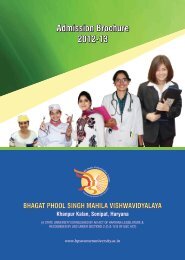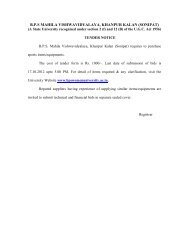Ordinance and Syllabus - Bhagat Phool Singh Mahila ...
Ordinance and Syllabus - Bhagat Phool Singh Mahila ...
Ordinance and Syllabus - Bhagat Phool Singh Mahila ...
You also want an ePaper? Increase the reach of your titles
YUMPU automatically turns print PDFs into web optimized ePapers that Google loves.
Paper Code: BPL-301 Pharmaceutical Chemistry-VII (Pharmaceutical Analysis-II)L -- T -- P Total Credits: 044 -- -- Total Marks: 100External Marks: 50Internal Marks: 50Paper Objectives:Study of this subject gives knowledge about different techniques used for the estimation ofdrugs. Students are given the basic knowledge regarding the components of these techniques.It includes the study of column, thin layer, gas-liquid chromatography, HPLC <strong>and</strong> GC-MS,potentiometry, polarography, radiochemical techniques <strong>and</strong> differential scanningcolorimetry.UNIT I Electrochemistry: The electric cell, electrode potential, half cells, types of half cells,sign convention, Nernst equation, the salt bridge, activity series, st<strong>and</strong>ard potential,st<strong>and</strong>ard hydrogen electrode, measuring the relative voltage of half cells, calculationsof st<strong>and</strong>ard potential, reference electrodes, indicator electrodes. Potentiometry: Theoretical considerations, ion-selective electrodes, measurement ofpotential, location of end point equipment, analytical application, direct measurementof a metal concentration, differential curve, determination of ksp, pH measurementdead-stop titrations; pH meter, pH definition, relation to pH to potential, equipment<strong>and</strong> applications. Conductometry: Conductometric titrations <strong>and</strong> their applications.UNIT IIPolarography <strong>and</strong> its applications: theory of mass transport processes, currentprocesses, current potential relationship, polarization, choice of electrodes, effect ofoxygen, instrumentation, calculation of concentration, laboratory design <strong>and</strong> safety.Amperometric tirations <strong>and</strong> its applications.Coulometry: Coulometric titrations, its principles <strong>and</strong> applications, controlledpotential coulometry, cell design, instrumentation, advantages <strong>and</strong> limitations, <strong>and</strong>electrode selection.Extraction: Extraction procedure, separation of drug from Excipients, liquid-liquidextraction, separation of mixtures by extraction, distribution law, successiveextraction, the Craig method of multiple extraction, continuous counter-currentextraction, effect of temperature, pH, inert solute, association, ion-pair formation, theemulsion problem in extraction.UNIT III Fundamentals of Chromatography: Introduction <strong>and</strong> theory of underlying differenttypes of chromatography techniques like- Column chromatography, thin layerchromatography, paper <strong>and</strong> circular chromatography, adsorbents <strong>and</strong> solvents used inthese techniques. TLC: TLC in quantitative estimation.75



